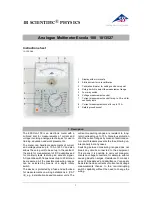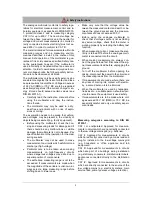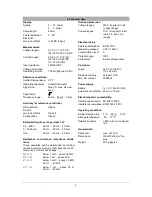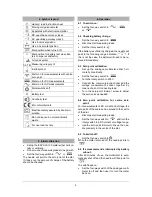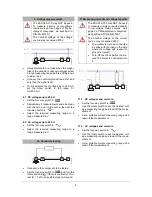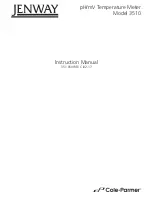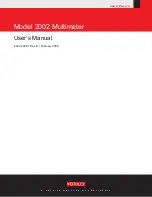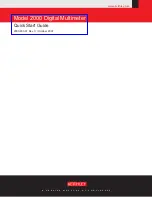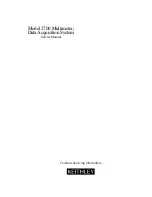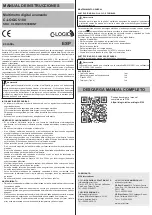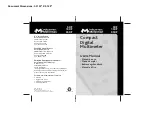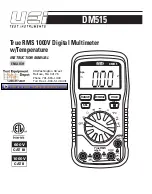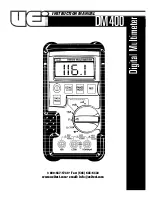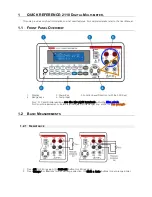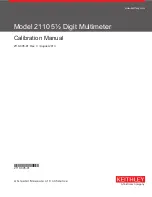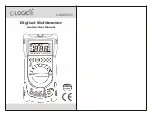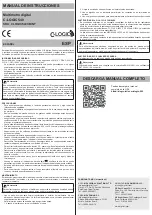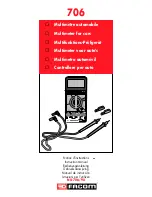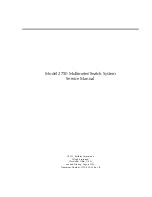
2
2. Safety instructions
The analogue multimeter conforms to safety regu-
lations for electrical measurement, control and la-
boratory equipment, as specified in DIN EN 61010-
1, protection class 2 and to measuring category
CAT III for up to 600 V. The nominal voltage be-
tween the phase conductors and the neutral for
voltage and current measurements (in circuits di-
rectly connected to mains electricity) must not ex-
ceed 600 V in order to conform to CAT III.
The meter is intended for measurements within its
measuring ranges and in a measuring environ-
ment as described in detail in the course of this
manual. Safe operation of the multimeter is gua-
ranteed if it is solely used as specified. Safety can-
not be guaranteed, however, if the multimeter is
used incorrectly or handled without due care and
attention. In order to avoid serious injury due to cur-
rent or voltage shocks, the following safety instruc-
tions are to be observed at all times.
The multimeter may only be used by persons who
are able to recognise the risks of contact and take
due precautions to avoid them. Voltages in excess
of 33 V AC (RMS) or 70 V DC are to be regarded
as actively dangerous if the current, charge or en-
ergy stored should exceed certain values (see
DIN EN 61010-1).
Carefully read the instruction manual before
using the multimeter and obey the instruc-
tions therein.
The multimeter may only be used in a dry,
dust-free environment with no risk of explo-
sions occurring.
The assumption needs to be made that unfore-
seen voltages may be present in the vincinity of
objects being measured (e.g. faulty equipment).
Before using the multimeter, check the hou-
sing and measuring leads for damage and if
there should be any malfunctions or visible
damage, the multimeter is not to be used. Pay
specific attention to the insulation for the mea-
suring sockets.
The multimeter may not be used to make
measurement on circuits which exhibit corona
discharge (high voltage).
Particular care is to be taken when making
measurements on high-frequency circuits
where dangerous voltages may arise due to
superimposition of components.
The authorised measuring range is not to be
exceeded. If measurements are made when
the magnitude of the variable is unknown, al-
ways select a large measuring range before
shifting down to lower ones.
Make very sure that the voltage value be-
tween the measured contact and earth or be-
tween the ground socket and the measure-
ment socket does not exceed 600 V.
Before using the analogue multimeter to
check that a voltage source is not exhibiting
any actual voltage, check that the meter is
working properly by selecting the battery test
function.
When measuring current, make sure the elec-
tricity is turned off before the analogue multi-
meter is connected into the circuit.
When making measurements, always con-
nect the ground lead first. Disconnect the sig-
nal measurement lead before unplugging the
ground.
Turn off the multimeter before opening the
casing, disconnect the power to the circuit and
the measuring leads from the multimeter.
If measurements are made where there are
any risks of coming into contact with electric-
ity, a second person is to be informed.
When the multimeter is used by teenagers,
trainees etc., a suitable person should super-
vise to ensure the equipment is used safely.
If measurements are to be made where volt-
ages exceed 33 V AC (RMS) or 70 V DC, be
especially careful and only use safety experi-
ment leads.
Measuring categories according to DIN EN
61010-1.
CAT I or unstipulated: Approved for measure-
ments in circuits which are not directly connected
to the low voltage mains grid (e.g. batteries).
CAT II: Approved for measurements in circuits
which are directly connected, by a mains lead and
plug for instance, to the low voltage mains grid
(e.g. household or office appliance and lab
equipment).
CAT III: Approved for measurements in circuits
which are part of a building’s wiring installation
(e.g. stationary consumers, distribution terminals,
appliances connected directly to the distribution
box).
CAT IV: Approved for measurements in circuits
which are directly connected to the source of the
low voltage mains (e.g. electricity meters, main
service feed, primary excess voltage protection).
Summary of Contents for Escola 100
Page 8: ......

